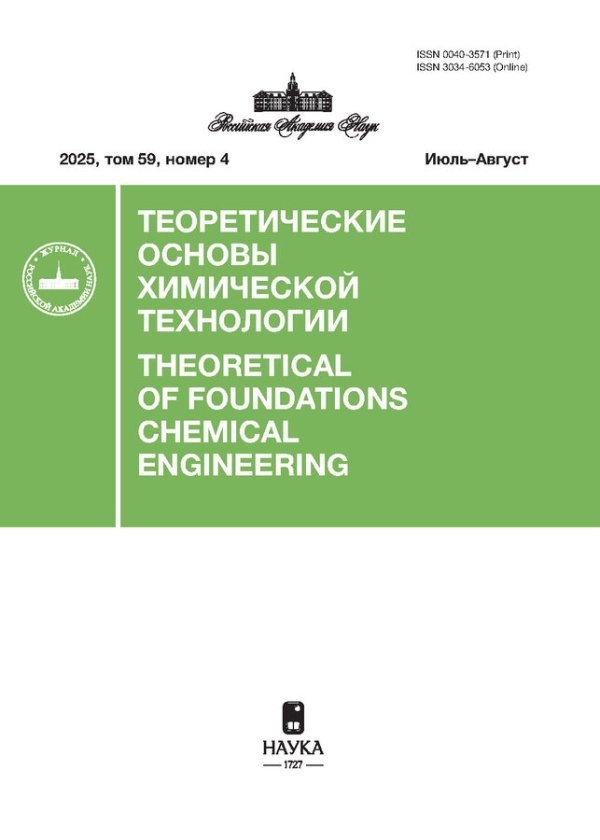Mathematical Description of Electric Mass-Transfer Processes Based on Substance Transfer Equation
- Authors: Ravichev L.V.1, Ilyina S.I.1, Loginov V.Y.1, Bykov V.I.1, Titov A.A.1
-
Affiliations:
- Mendeleev University of Chemical Technology of Russia
- Issue: Vol 57, No 5 (2023)
- Pages: 612-616
- Section: Articles
- Published: 01.09.2023
- URL: https://journals.rcsi.science/0040-3571/article/view/138552
- DOI: https://doi.org/10.31857/S0040357123050196
- EDN: https://elibrary.ru/MIBTJO
- ID: 138552
Cite item
Full Text
Abstract
Studies of the electrodialysis separation processes under pulsed current have faced problems related to the lack of a mathematical description of the electric mass-transfer processes, taking into account unsteady current modes. The main problem when describing electric mass-transfer processes is the presence of two driving forces, namely the electric potential gradient and the concentration gradient. The objective of the present work is creating a criterion equation describing charge transfer, derived by analogy with the derivation of the substance-transfer equations. As a result, a convective electrical conductivity equation is derived, which expresses in general terms the charge-density distribution in a moving flow. The obtained equation allows us to derive the criteria of electrical similarity, namely the electrical Peclet and Prandtl numbers. The obtained electrical numbers are compared with the classical criteria in terms of their dimensionalities. Using the obtained numbers, the Nusselt number for electric mass-transfer processes is derived, which takes into account the substance transfer both due to the concentration gradient and due to the potential difference, as well as the influence on the electrodialysis separation process of the operating and limiting current density and the geometrical parameters of the plant
About the authors
L. V. Ravichev
Mendeleev University of Chemical Technology of Russia
Email: ravichevlv@list.ru
Moscow, Russia
S. I. Ilyina
Mendeleev University of Chemical Technology of Russia
Email: ravichevlv@list.ru
Moscow, Russia
V. Ya. Loginov
Mendeleev University of Chemical Technology of Russia
Email: ravichevlv@list.ru
Moscow, Russia
V. I. Bykov
Mendeleev University of Chemical Technology of Russia
Email: ravichevlv@list.ru
Moscow, Russia
A. A. Titov
Mendeleev University of Chemical Technology of Russia
Author for correspondence.
Email: ravichevlv@list.ru
Moscow, Russia
References
- Жакин А.И. Электрогидродинамика // Успехи физических наук, 2012. Т. 182. № 5. С. 495–520. https://doi.org/10.3367/UFNr.0182.201205b.0495
- Саранин В.А. Электрогидродинамика: Равновесия, зарядка и конвекция жидких масс в электрических полях: дис. Док. Тех. Наук: 01.02.05 // Саранин Владимир Александрович. – Глазов, 1999.
- Ильин В.А., Пономарева Л.А. Электроконвекция слабопроводящей жидкости в высокочастотном электрическом поле // Вестник пермского университета. 2013. № 3(25). С. 28–36.
- Ильин В.А., Куршина Е.В. Исследование модели электроконвекции идеального диэлектрика в конденсаторе с твердыми границами // Вестник пермского университета. 2009. № 1(27). С. 3–6.
- Гросу Ф.П., Болога М.К., Болога А.М. Особенности теплообмена в условиях электрической конвекции // Электронная обработка материалов. 2010. № 4. С. 41–55.
Supplementary files











